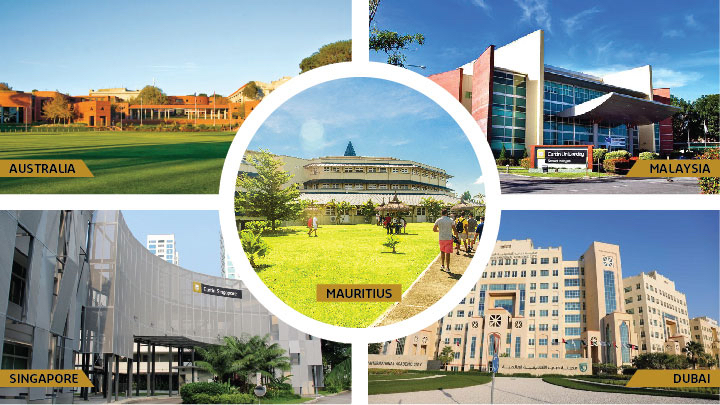
When worlds collide: convergence of international and online education
By 2040, global higher education enrollments will grow to 594 million students – almost three times the number studying in 2015. Clearly, education technology will play a big role in scaling education programs to meet this demand. But it can’t be the only solution.
In his paper Massification of higher education revisited, RMIT University’s Principal Advisor Planning and Research Angel Calderon, analyzed the current projections for student enrollments, and found enrollments in East Asia and the Pacific overtook North America and Western Europe in 2003. He forecasts enrollments from this region will continue to grow by a multiple of 3.7 by 2040, with similar levels of growth in South and West Asia and Latin America. Meanwhile, the number of students studying from the US and Western Europe will grow a modest 16% in the same period.
There is a global mismatch between the location of academic excellence and the location of demand for high-quality, globally recognized tertiary qualifications. This disconnect is driven primarily by countries like China, India, Brazil and Indonesia and has profound implications for the structure and delivery of tertiary higher education in the 21st century.
The key question all this raises is this: can existing institutions fill the gap? That is, provide high quality, accredited online (both asynchronous and synchronous) courses, certificates and degrees to students across the globe?
So far, the answer is no. While we’ve witnessed efforts to extend global learning and reach through online technology, we have not seen tens or hundreds of thousands (let alone millions) of international students enroll in certificate or full degree programs online.
But what would cause rapid change – that is, beyond a few early adopters into mainstream global acceptance? Is it simply a function of time, given the increasing quality, declining costs, and global acceptance of online programs?
In my opinion, the most important shift needs to occur within higher education institutions. To overcome the very real confusion (or negative perceptions) associated with current options, institutions need to better understand local needs in these source countries.
In the US, we’ve seen evidence that students are more likely to choose an online program with institutions that are geographically closer to them. For example, in 2015, 73% of exclusively online students studied in-state in California, compared with 26% from another state and just 1% outside the US. Leading national online degree programs also offer city-based study and social groups, where fellow students connect with each other in-person.
That’s why colleges and universities that focus on building on-the-ground partnerships in-country (especially by establishing a permanent physical presence) will be in a far better position to build awareness, understanding, and ultimately commitment.
This could be with a local university, establishing an overseas branch office, or even establishing a full degree-granting institution in-country. A solution anchored in a traditional approach that complements additional high-tech experiences.
For example, Navitas partner Curtin University has strategically opened a number of overseas campuses, including Dubai, Malaysia, Singapore and Mauritius. More recently, it also built a full suite of digital and online offerings by partnering with edX to offer a number of MOOCs, Micro Masters and online Masters. These, along with its physical presence in priority regions, help secure its position as a leading global university.
 Image courtesy of Curtin University
Image courtesy of Curtin University
Ultimately, those 594 million students in 2040 will find ways to gain the skills and credentials they desire, and create their own meaningful career opportunities. But along the way, they will still need student support and affordable programs. Plus, they’ll increasingly want to design their own personalized pathways through ‘stackable’ micro-credentials with the flexibility to study at different institutions.
We already see the emergence of ‘omnichannel’ education offers – where technology like AI-enabled teaching and learning platforms are used inside classrooms, and where online students also have access to campus resources and in-person support.
This is how technology and physical campuses will converge, both playing a significant role by creating immersive digital experiences and adaptive, supportive learning environments. Institutions that commit to establishing a permanent physical presence will have an advantage when they take on these challenges, and integrate them into a 21st century global learning experience.

 Image courtesy of Curtin University
Image courtesy of Curtin University

